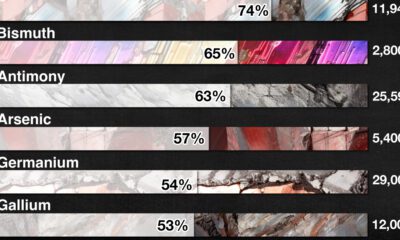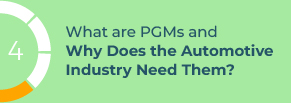Fork in the Road: 2 Scenarios For The EV Rollout

Fork in the Road: 2 Scenarios For the EV Rollout
Global forecasts for electric vehicle rollouts vary, with countries around the world pledging to speed up the transition to 100% zero-emission cars and vans by 2035-2040.
The shift towards electric vehicles is often hailed as a crucial step in combating climate change. However, the transition to battery electric vehicles (BEVs) has not been as smooth as anticipated.
According to projections by sponsor KGP Auto, BEVs will only make up 38% of the automotive market by 2040, far short of the 65% needed to achieve net-zero emissions. Let’s explore these projections further by breaking down two opposing scenarios up until 2040.
One Goal, Two Ways To Get There
Currently, many factors are limiting the forecasted rollout of BEVs, the most prominent being resource constraints.
With high demand and limited availability of critical transition metals, are there alternatives to reach net-zero targets?
The Balanced Scenario, laid out by KGP Auto, factors in current roadblocks impacting EV targets and presents an alternative road forward.
| Dominant Scenario | Balanced Scenario |
|---|---|
| In this forecasted scenario, to meet 1.5 degrees Celsius warming targets, internal combustion engines (ICEs) will be banned in most markets by 2035, and BEV share will reach 65% of global sales by 2040. | Alternatives will help bridge the gap between the desired proportion of BEVs and the achievable proportion, until constraints around resources, infrastructure, and costs are met. The mix will include: - Internal combustion engines (ICEs) - Plug-in hybrid electric vehicles (PHEVs) - Alternative fuels - Fuel cell electric vehicles (FCEVs) |
In the Balanced Scenario, the lower share of BEVs will require automakers to produce more ICE engines that meet strict emission standards, such as Euro 6 and the proposed Euro 7 vehicles.
The Role of PGMs
Platinum group metals (PGMs) are used in ICEs for catalytic converters in car exhaust systems. These systems turn toxic pollutants into less-harmful carbon dioxide and water vapor, allowing them to meet strict emission standards. In fact, most vehicles today use PGMs.
| Vehicle type | Use of PGMs |
|---|---|
| Plug-in hybrid electric vehicles (PHEV) | Yes |
| Internal combustion engine (ICE) | Yes |
| Hybrid electric vehicle (HEV) | Yes |
| Fuel cell electric vehicles (FCEVs) | Yes |
| Battery Electric Vehicle (BEV) | No |
Although FCEVs do not need catalytic converters, they rely on PGMs to store hydrogen which is converted into electricity by the fuel cell. These vehicles produce no tailpipe emissions and only emit water vapor and warm air.
KGP Auto’s report highlights that demand for materials to create catalytic converters and store hydrogen for vehicles will continue after 2040, particularly in developing markets where the BEV rollout is expected to be less prominent.
It’s important to consider all possible roads to decarbonize the auto industry, such as the proposed Balanced Scenario. This will help manufacturers meet demand as raw material supply, infrastructure, and affordability challenges delay BEV dominance.
>> Read KGP Auto’s Powertrain Outlook Report to learn more.

-

 Lithium14 hours ago
Lithium14 hours agoRanked: The Top 10 EV Battery Manufacturers in 2023
Asia dominates this ranking of the world’s largest EV battery manufacturers in 2023.
-

 Mining6 days ago
Mining6 days agoGold vs. S&P 500: Which Has Grown More Over Five Years?
The price of gold has set record highs in 2024, but how has this precious metal performed relative to the S&P 500?
-

 Mining3 weeks ago
Mining3 weeks agoCharted: The Value Gap Between the Gold Price and Gold Miners
While the price of gold has reached new record highs in 2024, gold mining stocks are still far from their 2011 peaks.
-

 Uranium2 months ago
Uranium2 months agoCharted: Global Uranium Reserves, by Country
We visualize the distribution of the world’s uranium reserves by country, with 3 countries accounting for more than half of total reserves.
-

 Energy4 months ago
Energy4 months agoThe Periodic Table of Commodity Returns (2014-2023)
Commodity returns in 2023 took a hit. This graphic shows the performance of commodities like gold, oil, nickel, and corn over the last decade.
-

 Mining4 months ago
Mining4 months agoChina Dominates the Supply of U.S. Critical Minerals List
The U.S. Geological Survey estimates that in 2022, China was the world’s leading producer of 30 out of 50 entries on the U.S. critical minerals list.






